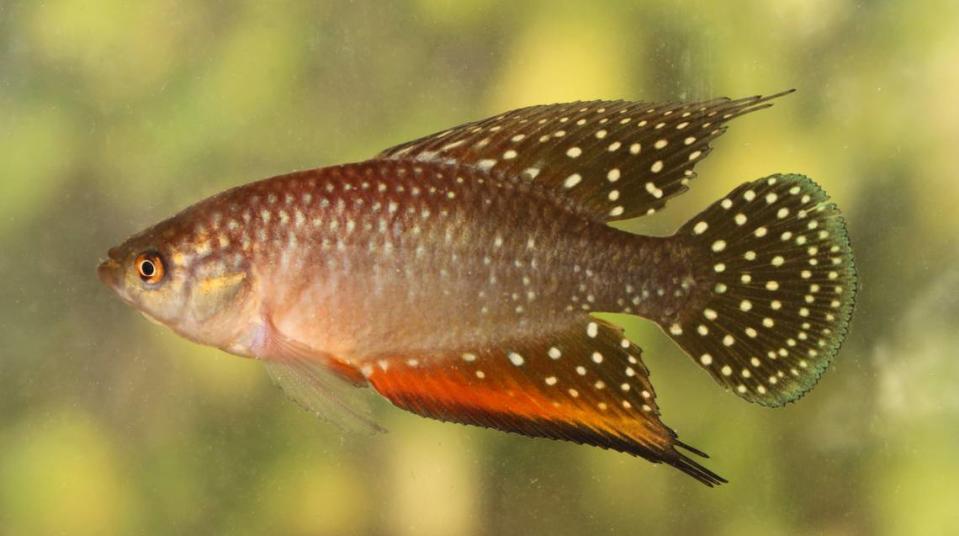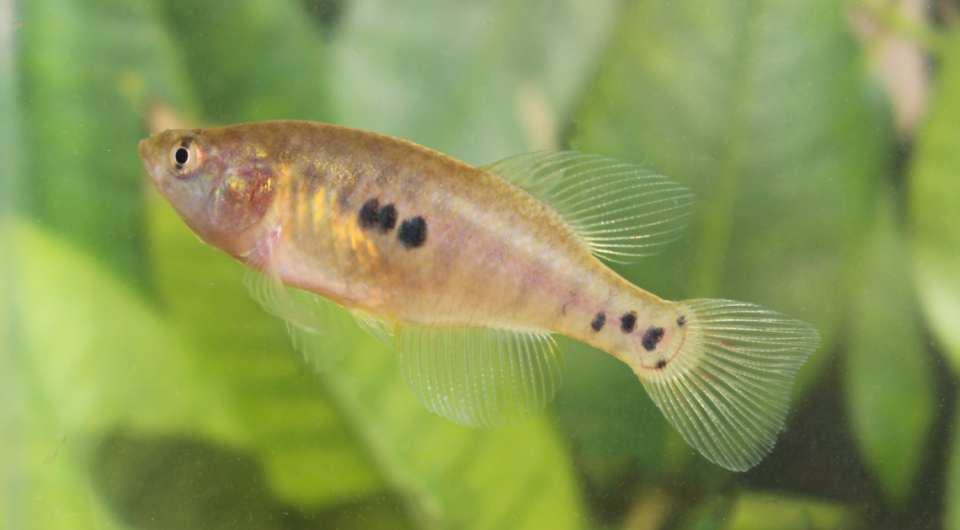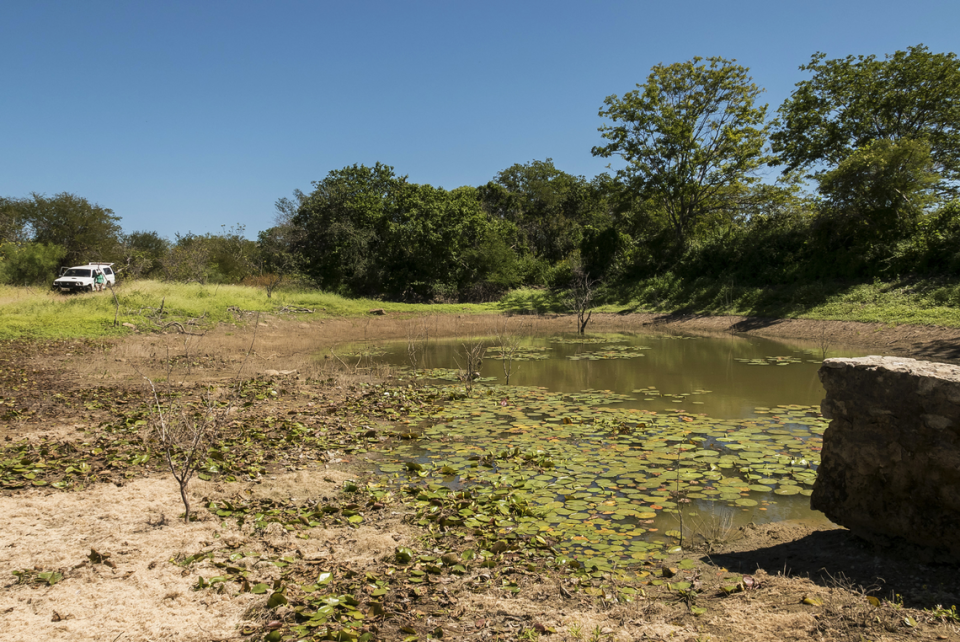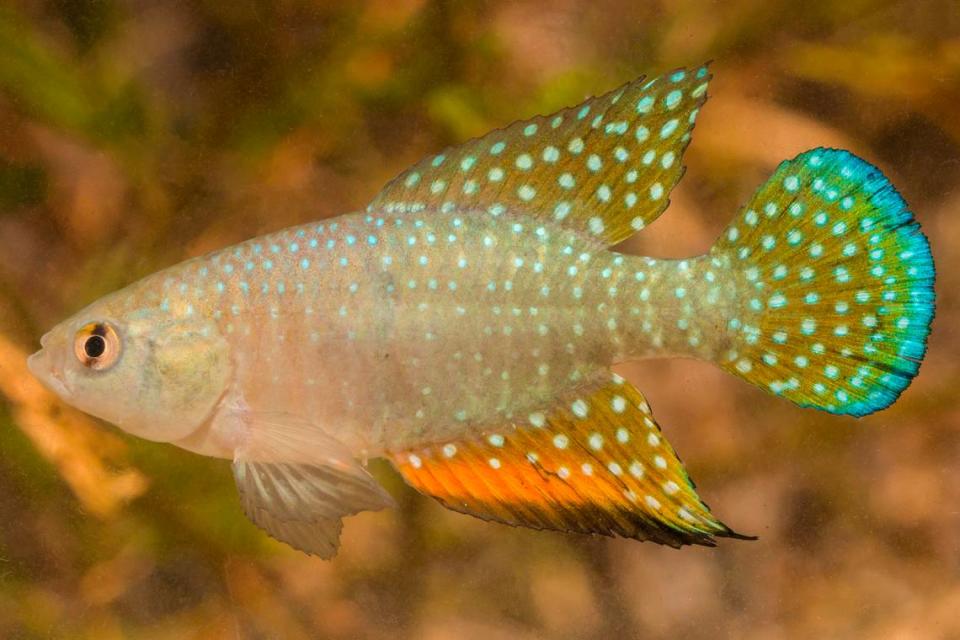Colorful water creature — with ‘large’ teeth and ‘iridescent’ scales — is new species
A flash of color and iridescence torpedoed through a small pool in Brazil, unaware that it was soon to be discovered as a new species.
Researchers were exploring temporary pools throughout northeastern Brazil when they found the colorful creatures, according to a study published Dec. 22 in the journal Zootaxa. After collecting and examining about 60 fish, the team of experts realized it had found two new species of seasonal killfish: Hypsolebias gongobira and Hypsolebias bonita.
The species are part of the Hypsolebias antenori group, which is comprised of species found only in Brazil’s Caatinga region, researchers said. Males in this group are distinguished by their “striking coloration” and thread-like fins.

Discover more new species
Thousands of new species are found each year. Here are three of our most eye-catching stories.
→ 8-eyed creature — with personality like 'Satan' — discovered
→ 'Ghost'-like creature with 'ample' genitalia found at power plant
→ 'Cryptic' 3-foot-long creature found in mangroves of Myanmar
Scientists examined eight specimens of H. gongobira — four males and four females — which were collected from a temporary pool in June 2021.
The fish have a “relatively deep” body, narrow head and a “long jaw” with “numerous” pointed teeth, experts said. The creatures’ teeth are “irregularly arranged” — their outer teeth are “large” and their inner teeth are “small” and “numerous.”
Specimens ranged in size from approximately 0.9 inches to 1.8 inches.
Researchers said female specimens have a “moderately long” and “pocket-shaped” urogenital opening, which they use to excrete waste and material from their reproductive system.
Male specimens have light gray to brownish sides of their body, which is covered with iridescent scales, according to the study. Their body is covered with “opaque white dots,” and their front side is “pale orange.”
The sides of their heads are “pale golden,” and they have “dark yellow” eyes, scientists said. Three fins are dark green with varying patterns. Their pectoral fins, which are on either side of their head, are translucent, and their pelvic fin is orange with a black stripe.
Females are also colorful, with a light gray body covered with iridescent gold spots, experts said. The sides of their head are “light purple,” and their fins are translucent.

The species was found in a temporary pool in a floodplain, researchers said. The pool was covered in “a dense layer of aquatic plants,” and it varied in depth.
Experts named the species after the divine entity Gongobira, who is believed to have populated lagoons with colorful fish. The new species should be considered “critically endangered.”
Scientists said they collected and examined 52 specimens of H. bonita. The fish were found from various locations between June 2018 and June 2019.
The species is known from six localities, two are in the Furna Feia National Park and four are in the floodplains of a river basin, according to the study.

The fish live in temporary pools, ranging from clear to muddy. Some specimens were found living in muddy pools among rocky outcrops or in caves, which researchers called “very unusual.”
Like Hypsolebias gongobira, Hypsolebias bonita has a “narrow” head and irregularly arranged teeth, but the fish have a “short” jaw, scientists said.

The fish ranged in size from about 0.7 inches to about 2 inches.
Male H. bonita have a light gray body with iridescent blue spots and a “pale” orange front side. The sides of their head are gold, and their fins vary in color and patterns. Photos show the creature’s unique coloration.

The species was named bonita, which means beautiful in Spanish, after Maria Bonita — a heroine in Brazil — and as an antonym to Furna Feia National Park because feia means ugly. Researchers said the fish should be categorized as a “vulnerable” species.
The team of experts was a collaboration between the Universidade Federal do Rio Grande do Norte (UFRN), the Universidade Federal da Paraíba (UFPB), the Centro de Pesquisa e Conservação de Cavernas (ICMBio/Cecav) and Instituto Tecnológico da Vale de desenvolvimento, co-author Yuri Gomes Abrantes told McClatchy News in an email.
Abrantes said the team plans to continue exploring the status of both populations to establish “conservation strategies.”
Clawed creatures form ‘conveyor-belt’ mass resembling a snake. See new Alaska species
‘Translucent’ creature with teeth on its back found in China cave. See the new species
Pink forest creature with 16 eyes and 9 sharp teeth is a ‘unique’ new species. See it

